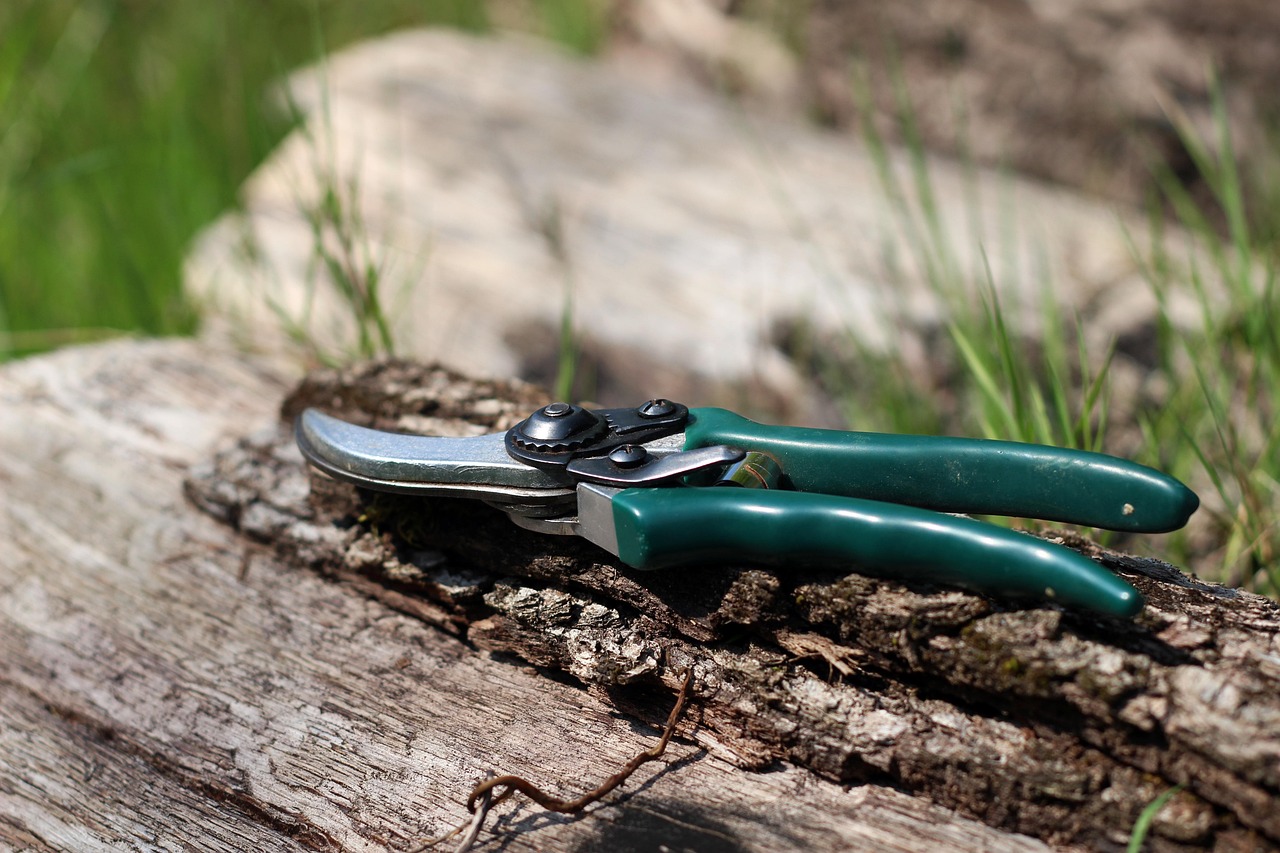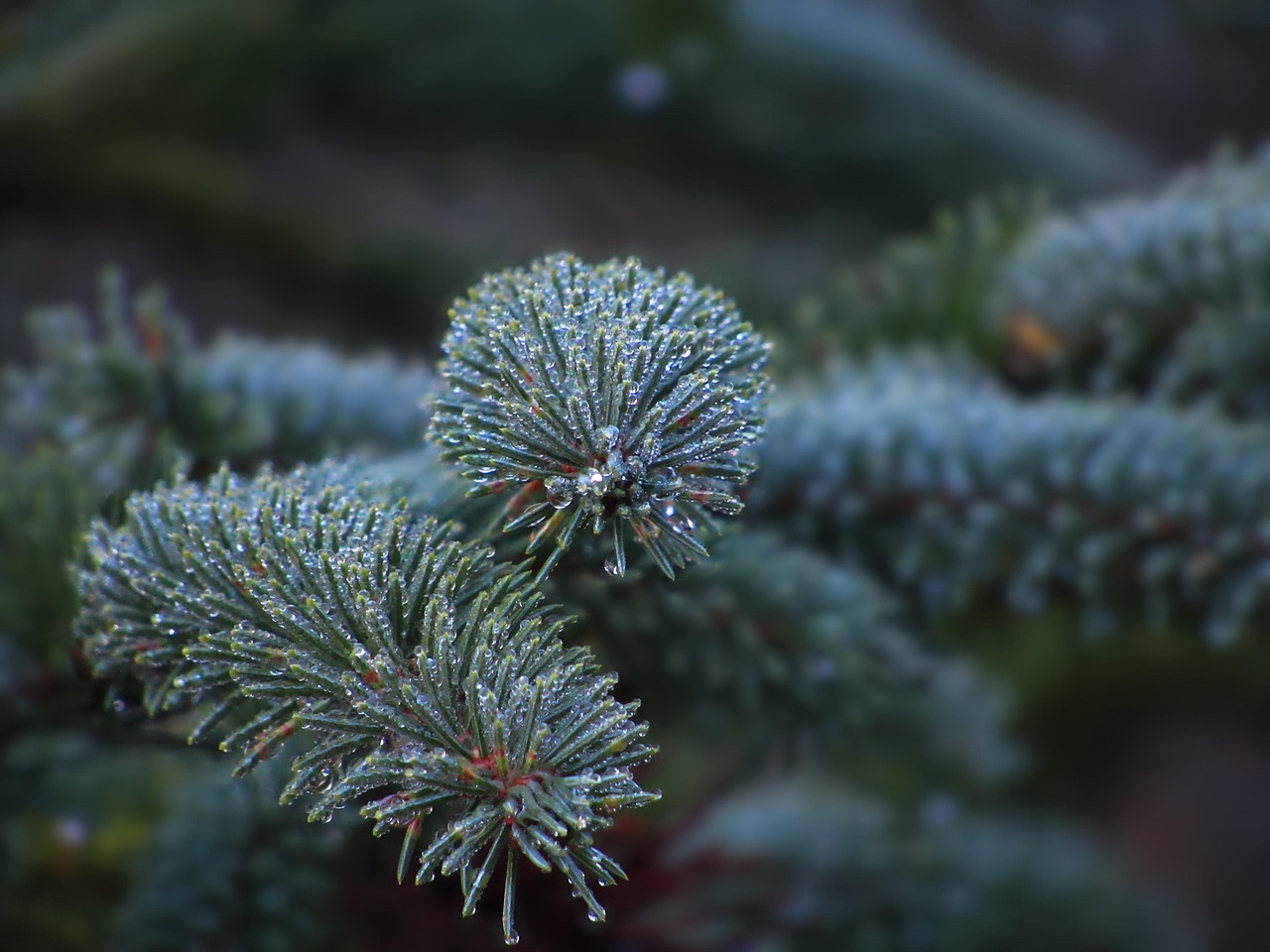Proper pruning of Blue Spruce trees enhances their effectiveness as windbreaks by promoting healthy growth, improving airflow, and maintaining a dense canopy. This process increases their ability to block wind and protect surrounding areas from harsh weather conditions.
Blue Spruce (Picea pungens) is a popular choice for landscaping and windbreaks due to its attractive blue-green needles and conical shape. These trees are hardy and can withstand various environmental conditions, making them ideal for use as windbreaks. Windbreaks serve a crucial function in protecting crops, homes, and outdoor spaces from strong winds. They reduce wind speed, which can help prevent soil erosion and protect plants from damage.

Pruning Blue Spruce trees is essential in maintaining their health and maximizing their windbreak capabilities. Regular pruning encourages robust growth and helps eliminate weak or damaged branches that could compromise the tree’s structure. Understanding the right techniques and timing for pruning is vital for achieving the best results.
Understanding Blue Spruce Trees
Before diving into pruning techniques, it is important to understand the characteristics of Blue Spruce trees. They typically grow to heights of 30 to 60 feet and can spread up to 20 feet wide. Their distinctive blue-gray needles are not only visually appealing but also contribute to their effectiveness as a windbreak.
Here are some key features of Blue Spruce trees:

| Feature | Description |
|---|---|
| Height | 30 to 60 feet |
| Spread | Up to 20 feet |
| Needle Color | Blue-gray |
| Growth Rate | Slow to moderate |
| Soil Preference | Well-drained soils; prefers slightly acidic conditions |
| Sunlight Preference | Full sun to partial shade |
These trees thrive in well-drained soil and require ample sunlight for optimal growth. As such, they are often planted in open spaces where they can receive direct sunlight throughout the day. Proper maintenance, including watering, fertilization, and pruning, is essential for keeping them healthy.
The Importance of Pruning Blue Spruce Trees
Regular pruning of Blue Spruce trees is necessary for several reasons. First, it helps maintain the tree’s shape and size. Over time, trees can become overgrown, leading to a less effective windbreak. Pruning helps control this growth and ensures that the tree remains dense and conical in shape, which is ideal for blocking wind.
Second, pruning promotes healthy air circulation within the tree canopy. A well-pruned tree allows air to flow through its branches, reducing humidity and minimizing the risk of fungal diseases. This is particularly important for Blue Spruce trees, which can be susceptible to certain diseases if their branches become overcrowded.

Finally, pruning allows for the removal of dead or diseased branches, which can weaken the tree over time. By regularly inspecting and pruning these branches, you can help prevent further issues and encourage new growth.
When to Prune Blue Spruce Trees
The timing of pruning is critical for the health of Blue Spruce trees. The best time to prune these trees is during late winter or early spring before new growth begins. This timing minimizes stress on the tree and reduces the risk of damage from pests or diseases.
- Late winter: Ideal period before new growth starts.
- Early spring: Prune just before budding occurs.
- Avoid late spring or summer: Pruning during these times can expose the tree to stress and disease.
It is also important to avoid pruning during fall, as this can stimulate new growth that may not have time to harden off before winter temperatures arrive. Proper timing ensures that the tree remains strong and healthy throughout the seasons.

Techniques for Pruning Blue Spruce Trees
When pruning Blue Spruce trees, certain techniques can help achieve the best results. Here are some effective methods:
- Thinning: Remove select branches to improve airflow within the canopy.
- Crown Reduction: Lower the height of the tree by pruning back taller branches.
- Deadwooding: Remove dead or diseased branches at their base.
- Shaping: Maintain the conical shape by trimming back excessive growth.
Each technique serves a specific purpose in promoting healthy growth and enhancing the overall appearance of the tree. By understanding these methods, you can effectively manage your Blue Spruce trees for optimal windbreak performance.
Tools Needed for Pruning Blue Spruce Trees
To effectively prune Blue Spruce trees, having the right tools is essential. The right equipment not only ensures safety but also promotes clean cuts that help prevent disease. Below is a list of commonly used tools for pruning:
- Hand Pruners: Ideal for cutting small branches and stems up to ¾ inch in diameter.
- Loppers: Useful for branches that are ¾ inch to 2 inches thick. They provide better leverage for cutting.
- Pruning Saw: Necessary for larger branches that are more than 2 inches in diameter. A saw allows for a cleaner cut.
- Hedge Shears: Helpful for shaping and trimming smaller, dense areas of the tree.
- Safety Gear: Always wear gloves, safety glasses, and protective clothing to avoid injuries.
Using the appropriate tools ensures that the pruning process is efficient and safe. Additionally, it is important to keep tools sharp and clean to reduce the risk of transmitting diseases between trees.
Understanding Tree Growth Patterns
Before pruning, it is crucial to understand how Blue Spruce trees grow. Their growth patterns impact how and when to prune effectively. Blue Spruce trees typically grow in a pyramidal shape with a central leader. This structure is vital for maintaining stability and windbreak effectiveness.
The growth of Blue Spruce trees can be categorized into two main phases:
- Juvenile Growth: In this phase, young trees focus on height and strong root development. During this period, minimal pruning is recommended to allow the tree to establish itself.
- Mature Growth: As the tree matures, it develops a fuller canopy. This phase is when regular pruning becomes essential to maintain its shape and health.
Understanding these phases enables you to make informed decisions regarding pruning timing and techniques. By respecting the natural growth of the tree, you can enhance its overall health and effectiveness as a windbreak.
Common Issues Faced During Pruning
Pruning can sometimes lead to challenges or issues that may arise during the process. Being aware of these can help you mitigate potential problems effectively. Here are some common issues to consider:
- Over-Pruning: Removing too much foliage can stress the tree and reduce its ability to photosynthesize.
- Pest Infestation: Open wounds from pruning can attract pests if not managed properly. Always monitor the tree after pruning.
- Disease Spread: Using unclean tools can spread diseases between trees. Always sanitize your equipment before and after use.
- Improper Cuts: Making cuts in the wrong location can lead to poor healing or even damage the tree’s structure.
By being mindful of these challenges and taking preventative measures, you can ensure a healthy pruning process that benefits your Blue Spruce trees.
Seasonal Maintenance Beyond Pruning
While pruning is a significant aspect of maintaining Blue Spruce trees, seasonal maintenance is equally important. This includes practices that support overall tree health throughout the year. Here are some essential maintenance activities:
- Watering: Ensure that your Blue Spruce receives adequate moisture, especially during dry spells. Deep watering supports root health.
- Fertilization: Applying a balanced fertilizer in early spring encourages healthy growth. Choose one that is suitable for coniferous trees.
- Pest Management: Regularly inspect your trees for signs of pests or diseases. Early detection can prevent larger infestations.
- Mulching: Adding a layer of mulch around the base of the tree helps retain moisture and suppress weeds.
Incorporating these practices into your seasonal routine will enhance the resilience and effectiveness of your Blue Spruce trees as windbreaks.
Environmental Considerations
The environment plays a significant role in how Blue Spruce trees grow and respond to pruning. Factors such as soil quality, sunlight exposure, and surrounding vegetation all influence tree health and effectiveness as windbreaks. Here are key environmental considerations:
- Soil Quality: Well-drained, slightly acidic soil ensures healthy root development. Conducting a soil test can help determine nutrient needs.
- Sunlight Exposure: Blue Spruce thrives in full sun. Ensure surrounding plants do not shade your trees too much.
- Climate Conditions: Understanding your local climate will help you choose the best times for pruning and maintenance activities.
- Companion Planting: Consider planting other species nearby that can complement the growth of Blue Spruce without competing for resources.
Taking these environmental factors into account can lead to more successful management of Blue Spruce as effective windbreaks while promoting their long-term health.
Identifying Signs of Stress in Blue Spruce Trees
Monitoring the health of Blue Spruce trees is essential for maintaining their effectiveness as windbreaks. Identifying signs of stress early can help you take appropriate action to address issues before they become severe. Here are some common indicators of stress in Blue Spruce trees:
- Discoloration of Needles: Yellowing or browning needles can indicate nutrient deficiencies or environmental stress.
- Needle Drop: Excessive shedding of needles, especially if it occurs in late summer or fall, can signal problems.
- Stunted Growth: Lack of new growth or a noticeable decrease in size can be a sign of root issues or lack of nutrients.
- Pest Infestation: Presence of pests like spider mites or bark beetles can compromise tree health.
- Visible Damage: Look for broken branches or wounds that can lead to disease entry points.
Regular inspections of your Blue Spruce will allow you to spot these signs promptly. Early intervention can often prevent further damage and maintain the tree’s role as an effective windbreak.
Pest and Disease Management
Blue Spruce trees can be susceptible to various pests and diseases that can hinder their growth and effectiveness. Understanding common threats and how to manage them will help you keep your trees healthy.
Common Pests
Several pests can affect Blue Spruce trees, including:
- Spider Mites: These tiny pests can cause needle discoloration and drop. Infestations are often worse in hot, dry weather.
- Bark Beetles: These insects bore into the bark, disrupting nutrient flow. Infestations typically require professional management.
- Aphids: Small insects that suck sap from the tree. They may cause curling of needles and attract other pests.
Disease Management
Diseases can also pose a significant threat to Blue Spruce trees. Here are some common diseases to watch for:
- Rhizosphaera Needle Cast: This fungal disease causes needle drop and is often visible as brown needles on the lower branches.
- Powdery Mildew: A fungal infection that appears as a white powdery substance on needles and branches, affecting the tree’s vigor.
- Cankers: These are dead areas on the bark caused by fungal infections. They can girdle branches and lead to dieback.
If you notice signs of pests or diseases, it is essential to consult with a local arborist or extension service. They can provide guidance on treatment options, such as organic pesticides or fungicides, as well as cultural practices that promote tree health.
Enhancing Windbreak Effectiveness
To maximize the effectiveness of Blue Spruce trees as windbreaks, consider implementing additional strategies beyond pruning. These strategies can enhance their ability to block wind and protect surrounding areas:
Planting Density
The density of planting plays a crucial role in windbreak effectiveness. When establishing a windbreak, consider the following:
- Spacing: Space Blue Spruce trees adequately to promote healthy growth while maximizing wind resistance. A spacing of 8 to 12 feet between trees is often recommended.
- Layering: Planting multiple rows of trees can create a more effective barrier against wind. The inner rows should consist of shorter species to reduce wind speed.
- Diversity: Incorporating various tree species alongside Blue Spruce can improve resilience and attract beneficial wildlife.
Maintenance Practices
In addition to pruning, regular maintenance practices contribute to the overall effectiveness of Blue Spruce windbreaks:
- Weed Control: Keep the area around the trees weed-free to reduce competition for nutrients and water.
- Irrigation: Ensure consistent watering during dry periods to support healthy growth and root establishment.
- Mulching: Apply mulch around the base of the trees to conserve moisture and suppress weeds while improving soil structure.
Long-Term Care for Blue Spruce Windbreaks
Caring for Blue Spruce trees requires long-term commitment and planning. Here are key practices to ensure their longevity and effectiveness as windbreaks:
- Regular Inspections: Monitor the health of your trees regularly for signs of stress, pests, or diseases.
- Sustained Pruning Schedule: Follow a consistent pruning schedule based on growth patterns and seasonal changes.
- Nutrient Management: Regularly test soil and apply necessary fertilizers to maintain soil health and tree vigor.
- Lifespan Considerations: Blue Spruce has a lifespan of 20 to 50 years; plan for eventual replacement if needed.
By implementing these long-term care practices, you can ensure that your Blue Spruce trees remain effective windbreaks throughout their lifespan, providing valuable protection for your landscape and property.
Additional Considerations for Blue Spruce Windbreaks
In addition to the long-term care practices previously mentioned, several other considerations can enhance the effectiveness of Blue Spruce as windbreaks. By integrating these factors into your management strategy, you can significantly improve both the health of the trees and their ability to serve as effective barriers against wind.
Microclimate Creation
Blue Spruce trees can create beneficial microclimates in their vicinity. This can be particularly advantageous for gardens, crops, or outdoor living spaces. Here are ways to leverage this aspect:
- Shade Provision: The canopy of Blue Spruce provides shade, which can help moderate temperatures in the summer months, protecting sensitive plants.
- Moisture Retention: By reducing wind speed, these trees help maintain higher humidity levels in their immediate area, which can be beneficial for plant growth.
- Soil Erosion Prevention: The root systems of Blue Spruce can help stabilize soil, making these trees effective in preventing erosion on slopes or in areas prone to runoff.
Seasonal Adjustments
Adjusting care practices with the changing seasons can also enhance the vitality of your Blue Spruce trees:
- Spring: Focus on pruning and fertilizing as new growth begins. This sets the stage for a healthy growing season.
- Summer: Monitor for pests and ensure adequate watering during dry spells. Mulching can help retain moisture.
- Fall: Conduct a final inspection and consider applying a slow-release fertilizer to prepare the trees for winter.
- Winter: Protect young trees from heavy snow accumulation and ice damage by gently brushing off snow and ensuring they are well-watered before freeze conditions.
Community and Environmental Impact
Planting and maintaining Blue Spruce as windbreaks not only benefits individual properties but can also contribute positively to the community and environment. Consider these impacts:
- Biodiversity Enhancement: Well-planned windbreaks provide habitats for various wildlife species, contributing to local biodiversity.
- Aesthetic Value: Healthy Blue Spruce trees improve the visual appeal of neighborhoods and landscapes, promoting property values.
- Climate Mitigation: Trees help sequester carbon dioxide, playing a role in combating climate change while improving air quality.
- Noise Reduction: Dense tree plantings can act as sound barriers, reducing noise pollution in urban areas.
Final Thoughts
Caring for Blue Spruce trees as effective windbreaks requires knowledge, commitment, and attention to detail. By understanding the importance of proper pruning techniques, seasonal maintenance, pest management, and environmental considerations, you can cultivate healthy trees that serve their purpose well. Regular inspections and a proactive approach to tree care will ensure that your Blue Spruce continues to thrive for many years.
The investment in these trees is not only about immediate benefits but also about fostering a sustainable environment that enhances your landscape and protects your property. Embracing such practices will yield a rich return in terms of beauty, health benefits, and ecological balance.
In conclusion, whether you are an experienced gardener or just beginning your journey with Blue Spruce trees, implementing these comprehensive care strategies will help you achieve a thriving windbreak that provides shelter, beauty, and environmental benefits. Properly managed, your Blue Spruce will stand tall against the wind for generations to come.
